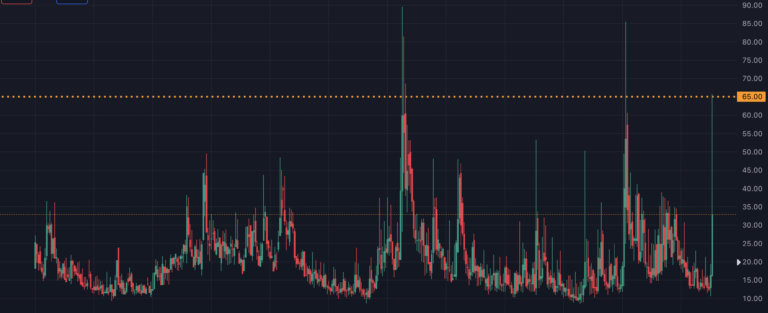SVXY, SVIX Volatility ETPs: How Do Short Volatility ETPs Work?
Today, there is a vast and diverse array of financial instruments available, with new products constantly emerging to meet the evolving needs of traders and investors. Among these, volatility Exchange-Traded Products (ETPs) have gained significant attention in recent years. This blog post will focus on short volatility ETPs, specifically SVXY and SVIX, exploring their history, mechanics, and implications for traders.
A Brief History of SVXY and SVIX
The ProShares Short VIX Short-Term Futures ETF (SVXY) was introduced in October 2011, while the 1x Short VIX Futures ETF (SVIX) is a more recent addition to the market (2022). These products were designed to provide inverse exposure to short-term VIX futures, allowing traders to potentially profit from decreases in market volatility. It’s interesting to note that SVXY underwent a significant change in 2018 following the “Volmageddon” event. On February 5, 2018, SVXY lost about 90% of its value in a single day due to an unprecedented spike in volatility. As a result, ProShares modified SVXY’s structure, reducing its leverage from -1x to -0.5x to mitigate such extreme losses in the future.
How Short Volatility ETPs Work
To understand how SVXY and SVIX function, it’s crucial first to grasp the concept of the VIX and its futures. The VIX, or the CBOE Volatility Index, is often referred to as the “fear index.” It measures the market’s expectation of 30-day volatility implied by S&P 500 index options. A higher VIX indicates greater expected volatility, while a lower VIX suggests calmer market conditions.
VIX futures are contracts based on the expected value of the VIX at various future dates. Short volatility ETPs like SVXY and SVIX aim to provide the inverse performance of these short-term VIX futures. In other words, they are designed to increase in value when volatility decreases and vice versa.
The mechanics of these ETPs involve daily rebalancing to maintain their target exposure. For instance, SVXY aims to provide -0.5x the daily performance of the S&P 500 VIX Short-Term Futures Index. This means if the index falls by 1% on a given day, SVXY should theoretically rise by about 0.5%.
It’s important to note that these products are designed for short-term trading rather than long-term holding. Due to the daily rebalancing and the nature of VIX futures, the long-term performance of these ETPs can significantly deviate from simply inverting the VIX’s performance over the same period.
Scenarios and Examples for Traders
Traders use short volatility ETPs in various scenarios, often as part of a broader volatility trading strategy. Here are a few examples:
- Volatility Mean Reversion: Some traders use these products based on the belief that volatility tends to revert to its mean over time. After periods of high volatility, they might buy SVXY or SVIX, anticipating a return to calmer market conditions.
- Hedging Long Volatility Positions: Traders with long positions in volatility products might use SVXY or SVIX to hedge their exposure partially.
- Exploiting Volatility Term Structure: Advanced traders might use these products as part of strategies that exploit the differences between short-term and long-term volatility expectations.
Benefits and Risks
The potential benefits of trading short volatility ETPs include:
- Ability to profit from decreasing market volatility
- Liquid instruments that can be easily bought and sold
- No need to directly trade complex VIX futures contracts
However, these products come with significant risks that traders must be acutely aware of:
- Extreme Volatility Risk: During periods of sudden, extreme market volatility, these products can experience severe losses. However, SVIX employs call option hedges to mitigate against such extreme losses. This strategy involves purchasing out-of-the-money VIX call options, which increase in value during volatility spikes, offsetting some of the losses in the short volatility position. While this approach doesn’t eliminate all risk, it provides a level of protection against catastrophic losses like those seen in the “Volmageddon” event of February 2018, where some unhedged short volatility products lost nearly all their value overnight.
- Decay Over Time: Due to the contango often present in VIX futures (where longer-dated futures are more expensive than near-term ones), these products tend to lose value over time in sideways markets.
- Compounding Effects: The daily rebalancing can lead to unexpected results over longer holding periods, especially in volatile markets.
- Complexity: These products are complex and may behave in ways that are not intuitive, even to experienced traders.
Short volatility ETPs like SVXY and SVIX offer traders unique tools to express views on market volatility. However, they are sophisticated instruments that require a deep understanding of their mechanics and associated risks. Traders considering these products should thoroughly research their characteristics, carefully monitor their positions, and be prepared for potentially swift and significant market moves.




